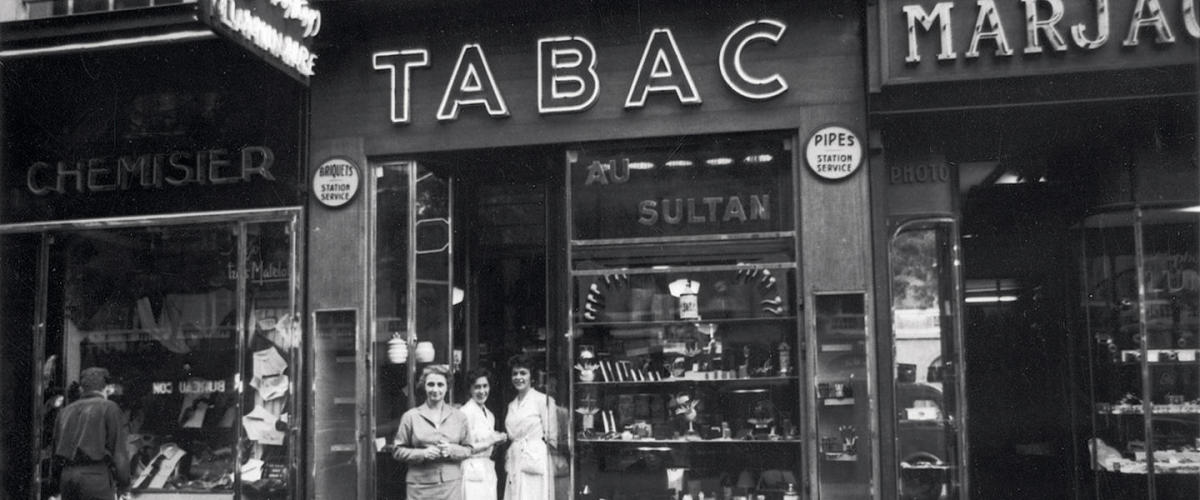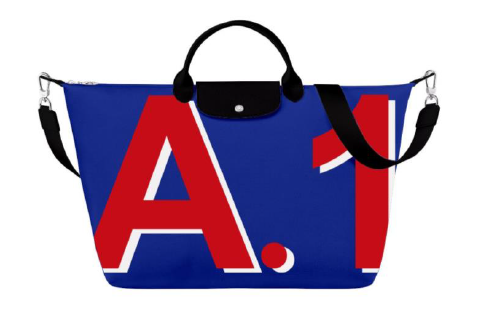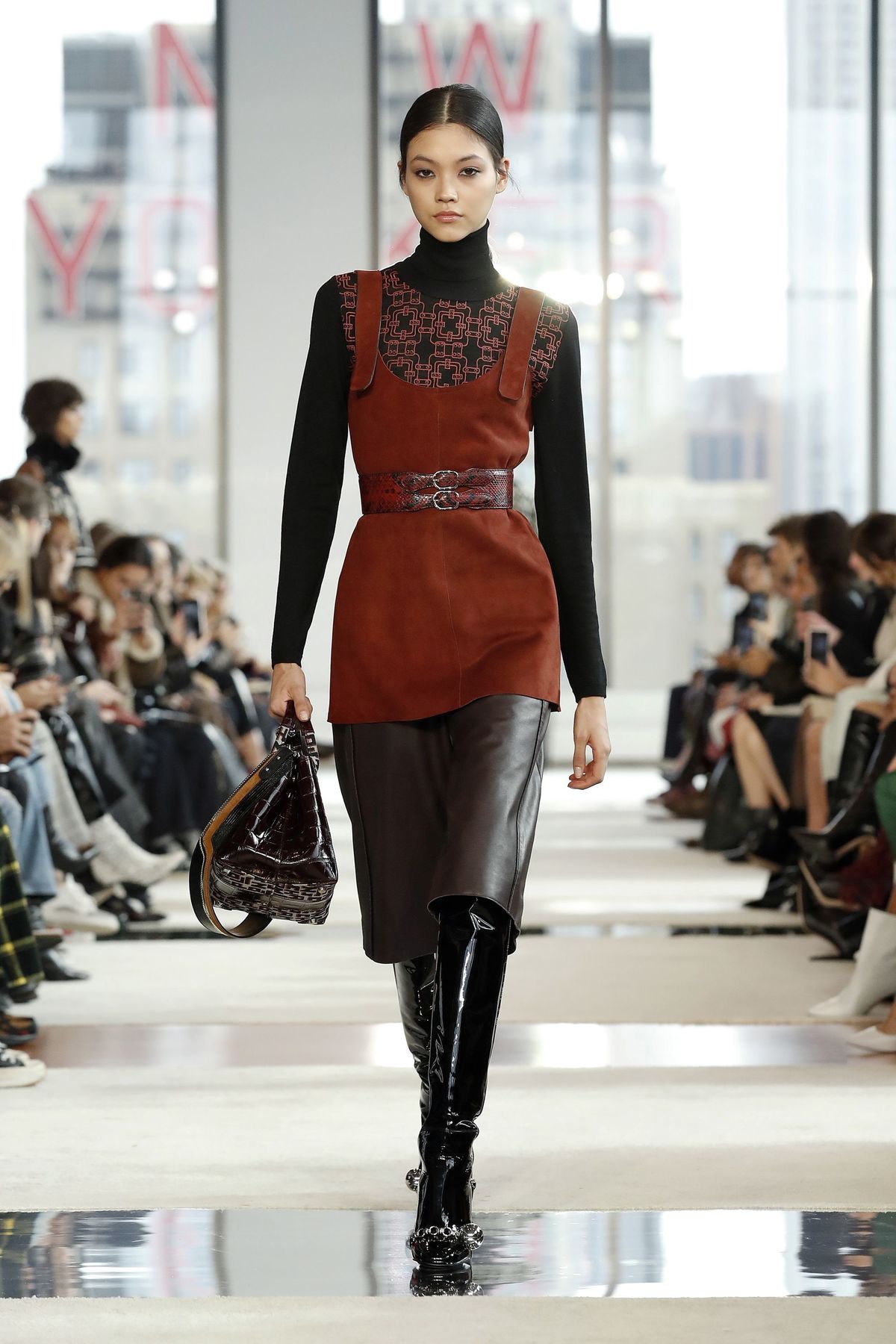Dialogue with the 3rd-Generation of Longchamp Family
July 20,2020
In the memory of many Chinese consumers, theТ Longchamp Le PliageТ series is one of the first luxury bags they came into contact with. This series has quickly become popular around the world since it first appeared in the 1990s and started a wave of light travel.
Recently, Luxe.CO had a conversation with Jean Cassegrain, the third-generation and the global CEO of the French luxury leather goods brand,Т Longchamp, to acquire a deep understanding of this French family businessтs history, operation and especially their latest thinking and actions for a "sustainable strategy".

From the World's First Premium Leather Pipe to the Kingdom of Luxury Leather Goods
In 1948, Jean Cassegrain, the brand founder who shares his name with the current CEO, took over the family tobacco business and founded the Longchamp brand. He opened a boutique in the bustling commercial Boulevard PoissonniУЈre in the center of Paris, where the world's first high-end leather pipe was born and where the brandтs reputation was established among Parisians and international tourists.

Longchamp made its debut at the Paris Fair on May 1, 1948. Due to his experience of this exhibition Jean Cassegrain immediately became aware of the huge number of business opportunities in the travel shopping market, so he sent Philippe, his eldest son, overseas to learn the local culture.
In the early 1950s, Jean Cassegrain realized that airports not only attracted passengers, but they also attracted many tourists wishing to meet the Hollywood stars who were flying in and out of them, such as Audrey Hepburn. Therefore, he set up a special counter (pictured below) at Orly Sud Airport in Paris to display and sell luggage, and then opened a special airport boutique, becoming one of the first brands to open a store in an airport.

Starting with the worldтs first high-end leather pipe, the brand gradually expanded its leather goods business to small leather goods in the 1950s, handbags in the 1970s, ready-to-wear and fashion accessories in 2006, and shoes in 2012.
Mr. Cassegrain told Luxe.CO, тMy grandfather was always confident that the brand could be expanded internationally. He began to sell our high-end leather pipes and other leather accessories around the world as early as the 1950s. I always found this fascinating from a young age. My grandfather kept instilling the value of innovation and desire to develop new products in all of us.

The picture above: The second generation: President Philippe Cassegrain (second from right); The third generation: CEO Jean Cassegrain (first from right); Art director Sophie Delafontaine (second from left); US sales director Olivier Cassegrain (first from left)
From a Sustainable Version of Longchamp Le Pliage to a Systematic Sustainable Strategy
Adhering to the core values ттof family innovation and respect for craftsmanship, Longchamp has long established sustainability as the company's development strategy. Mr. Cassegrain told Luxe.CO, тOur craftsmen respect the raw materials, and seldom discard them at will, but make the best use of them. The whole piece of leather is used to make handbags, and the rest is used to make wallets, card package, and any excess scraps can be utilized to make useful products."
Longchamp recently launched a sustainable version of the Longchamp Le Pliage, the My PliageТЎ Signature environmentally-friendly customized series, whose raw material is 100% recycled polyester fiber extracted from plastic waste, especially plastic bottles. It produces three sizes of bags, equivalent to 10, 15, and 23 recycled plastic bottles.

When talking about the meaning of a sustainable strategy to Longchamp, Mr. Cassegrain said:
"Customer trust is the prerequisite of the brand, and it is also the core of maintaining the relationship between customers and the brand. The sustainable strategy is based on this trust-driven relationship, doing everything we can to increase customersт confidence in us.
We have worked with some subcontractors for more than 50 years. My father used to work with people of his generation and I work with their children. This long-term and stable cooperation ensures the continuation of product quality and the transparency of the supply chain. "

In terms of how to implement a sustainable strategy in the production process, Mr. Cassegrain told Luxe.CO:
"We have established a special environmental committee to work closely with the product development team. The same person is in charge of the committee and the quality control department. This person is responsible for solving the environmental problems encountered in product production, while also ensuring maximum product quality.
The leather we use is a renewable material. It should be noted that the leather used in the leather industry comes from cattle and sheep used for food consumption, and no factory specifically raises these animals to obtain leather. The tanning industry has retained this circular economy concept for 5000 years.
Besides, the tannery is now equipped with an advanced sewage treatment system to ensure that the water flowing out will not be polluted; in fact, it is even cleaner than the water flowing in. "



Longchamp has also developed a systematic sustainable strategy to minimize the environmental impact of leather accessories production:
- Т Т Т "Made in Longchamp":The brand has opened six production bases in western France (Mayenne, VendУЉe, Maine-Loire, and Orne regions), and two overseas bases in Tunisia and Mauritius. At the same time, the cooperative workshops of China, Romania, and Morocco work closely together to ensure that each product with the "Made by Longchamp" label has a uniform quality standard, and indicates where the product was assembled.
- Т Т Т Control the source of leather: The leather raw materials used by the brand come from cattle and sheep reared for food consumption in Europe, Africa, and South America. The breeding conditions of these cattle and sheep must meet the relevant requirements.
- Т Т Т Transparency in the supply chain: The brand has always maintained a stable cooperative relationship with its leather, textile, buckle, accessories, and packaging suppliers, many of which have been cooperating for more than 30 years. The cooperative tannery uses a high-performance water treatment system, and the by-products produced by the tannery are usually recycled directly or through a third party.
- Т Т Т Reduce waste and energy consumption: The brand does its best to recycle all kinds of materials and dedicates a team to develop recycling solutions, explore the possibility of turning waste into treasure, and reduce the impact of lighting and logistics transportation on the environment during operation.
"We Enjoy the Greatest Degree of Freedom in Product Innovation and Corporate Decision-making"
Mr. Cassegrain told Luxe.CO that the keywords of the Longchamp brand are "family", "leather goods", "fun", "quality" and "creative", and "exploration and innovation". These are the driving force of the brand's continuous advancement. He emphasized that, "As a family business that maintains an independent operation, we enjoy the greatest degree of freedom in product innovation and corporate decision-making."
Since the 1970s, Longchamp has begun to explore cooperation and the sharing of artistic creativity by working with cross-border creative personnel in the production process, advertising, and media, Energize. In 2018, the commemorative capsule series launched by the brand and American designer, Shayne Oliver, was a great success. Besides, Longchamp has also cooperated with many fashion professionals, such as the American designer Jeremy Scott, British designer Mary Kaantzou, and the Chinese fashion blogger, Tao Liang.
Longchamp has launched ready-to-wear and footwear collections for more than 10 years. Longchamp made its debut on the runway of New York Fashion Week in 2018, on the occasion of the brand's 70th anniversary.
Mr. Cassegrain believes that leather goods and fashion are constantly merging. Fashion brings energy to leather goods. At the same time, leather goods and handbags have become the most attractive product category for fashion brands. "To adapt to this development trend, our vision is to develop the fashion business, while maintaining the status of a leather goods manufacturer. We believe that our upcoming autumn collection will be a success. Although the works in each category are independent, they also form a strong bond based on a unified color and texture."

"Customers Love Us Because We Retain a Strong French Flavor"
Mr. Cassegrain disclosed to Luxe.CO that France is still Longchamp's number one market, followed by China and the United States. (Longchamp entered the Chinese market in 2006)
The brand is rooted in Paris, France, but at the same time, it maintains an international and fashionable language. Since it is quite mature in the European, Asia-Pacific, and American markets, it is currently focusing on fine-tuning its existing sales network, enhancing the advantages of the location of its stores, and achieving an efficient omni-channel experience.
He emphasized that, " Our products have been exported from France to the world since the 1950s. The reason customers love our products is not their cultural neutrality, but precisely because the brand retains a strong French style. Today, our omni-channel strategy will allow brands to maintain closer contact with customers around the world and on the Internet."
"We are One of the Leaders in the Digitalization of the French Luxury Goods Industry"

Mr. Cassegrain told Luxe.CO, тWe have made digitalization a key strategy since 2000, Т and launched the official brand website. It can be said that we are one of the leaders in the digitalization of the French luxury goods industry. Since then, our e-commerce business website has targeted some products and we have also launched customized service options.
We will continue to follow the trends of China's new social media platforms. For us, these are not just platforms for keeping in touch with existing customers, but they also represent an important opportunity to reach new customer groups. "
| Photo Credit: Longchamp
| Chinese Correspondent: Jun Liu












Comments